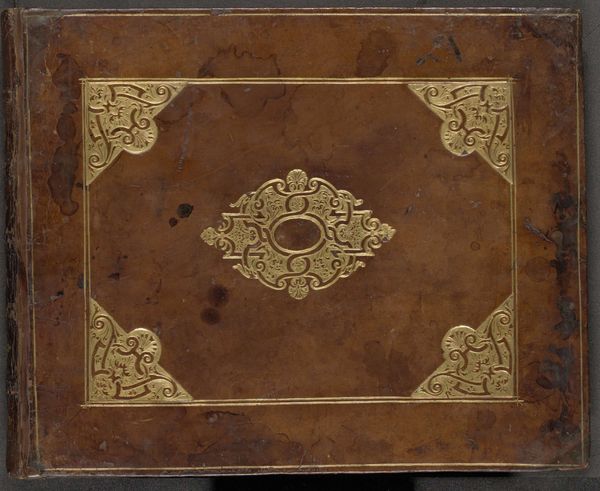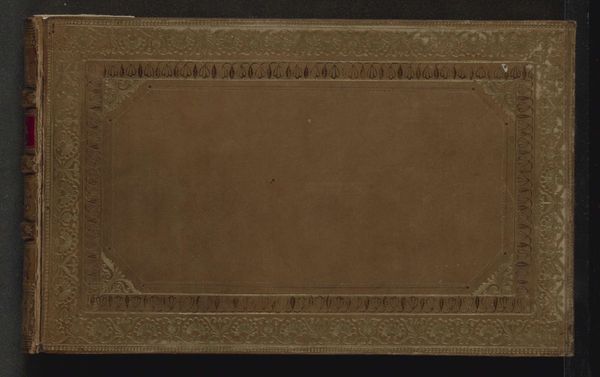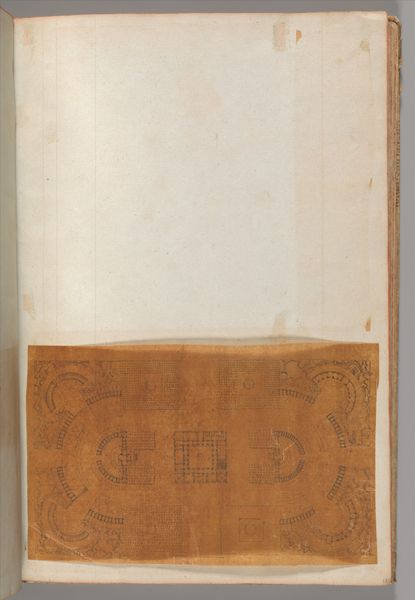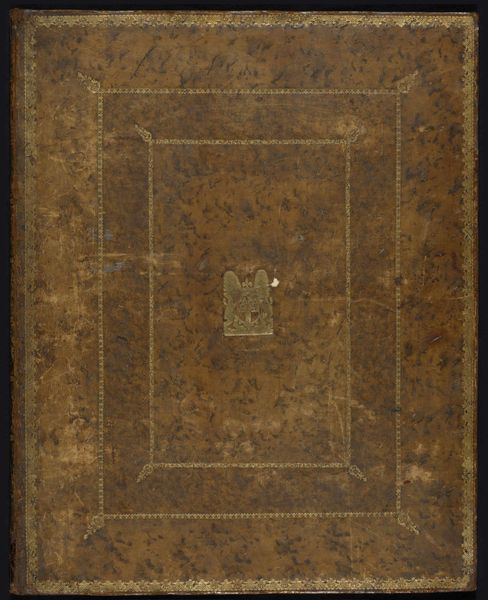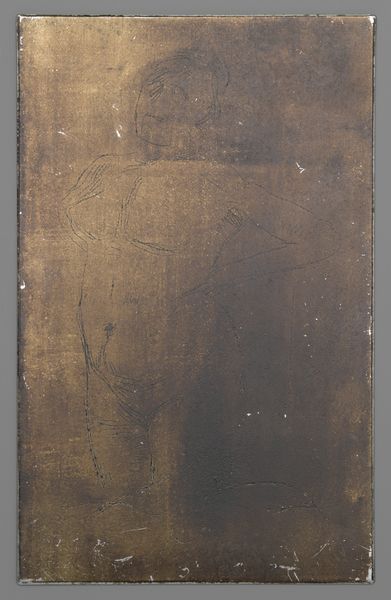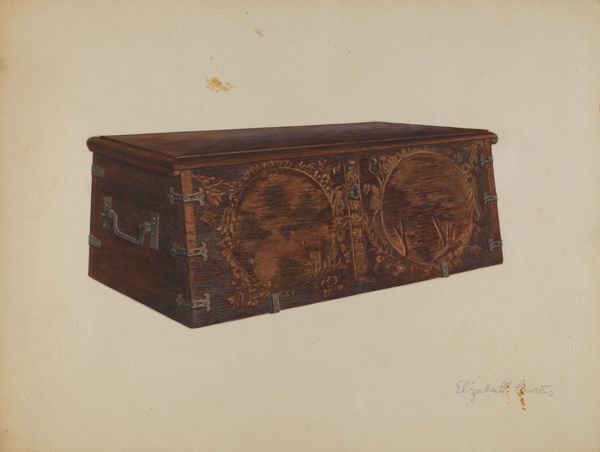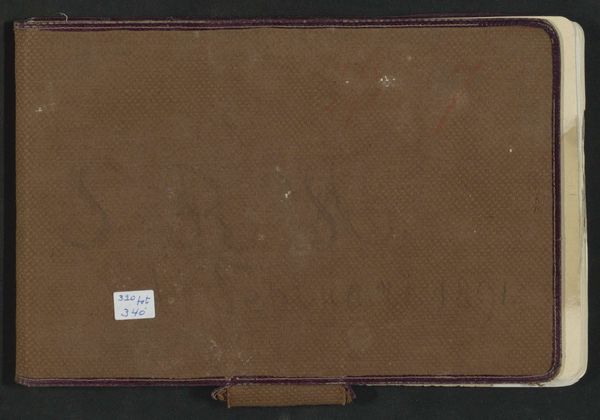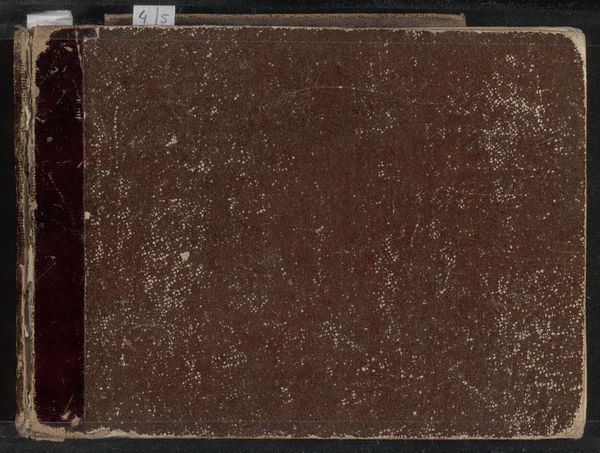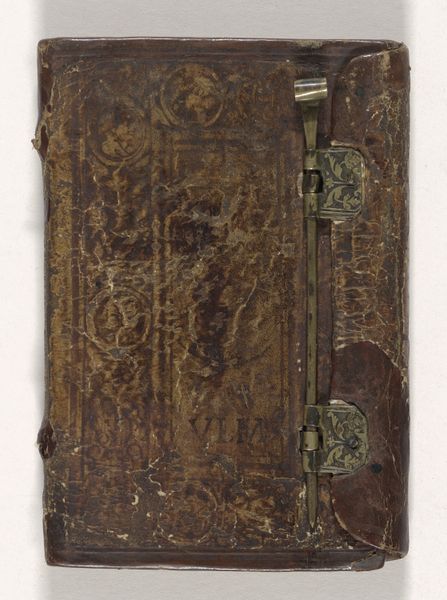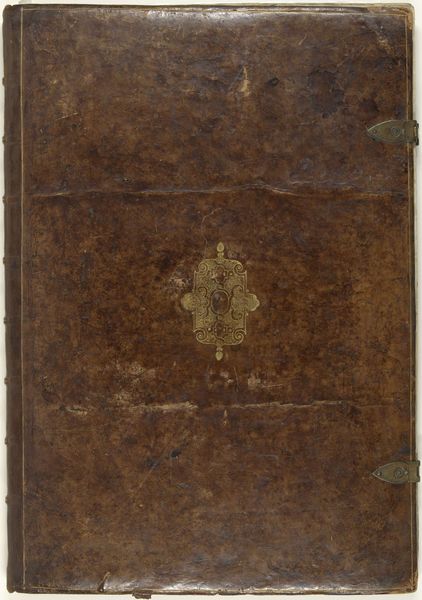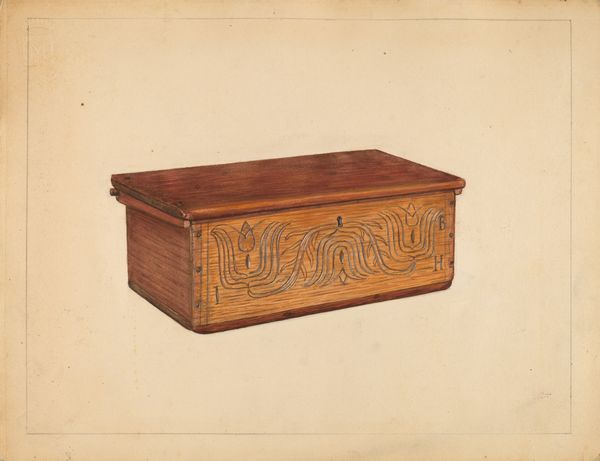
metal, sculpture, wood
#
worn
#
metal
#
sculpture
#
ancient-mediterranean
#
sculpture
#
wooden texture
#
wood
#
history-painting
Dimensions: height 275 mm, width 414 mm, thickness 28 mm, width 825 mm
Copyright: Rijks Museum: Open Domain
Editor: Here we have "Album met Romeinse monumenten en sculpturen," dating from before 1631, by diverse makers, held at the Rijksmuseum. The album’s aged cover—a kind of weathered leather with metal detailing—gives me a sense of history contained, a tangible connection to the past. How do you interpret this object? Curator: What immediately strikes me is not just the age, but how this album represents the power of visual knowledge and its circulation. Consider this: Before widespread photography, albums like these were vital tools. They weren't passive records, but active participants in shaping perceptions of Roman power, of its sculptures and monuments that were used to legitimise the patrons' power. This specific compilation could be seen as an attempt to visually claim inheritance. Who was constructing these albums, and for what purposes? Editor: That’s fascinating. I hadn't considered the act of compilation as an act of claiming power. What kind of a statement was this making about ancient Rome itself? Curator: Exactly! By carefully selecting and arranging these images, the album's compiler essentially crafts a narrative. Were they emphasizing military strength? Architectural grandeur? Think about who might have commissioned this album. Aristocrats wanting to showcase their connections to a powerful lineage? Artists seeking inspiration from classical forms? Its materiality already says much: these are worn objects that speaks to constant use and historical value. How do you think our understanding of history changes when it's filtered through these personalized collections? Editor: It makes history seem much more subjective, actively constructed, rather than simply an objective record. You know, it seems to imply a will, a desire for what’s been. Curator: Precisely! The "Album met Romeinse monumenten en sculpturen" becomes an eloquent artifact. A potent reminder of how the past is constantly reinterpreted and used to negotiate power in the present. Editor: This has definitely made me see the album in a completely new light – beyond just its aesthetic qualities, and more in terms of its historical and social significance. Thanks!
Comments
No comments
Be the first to comment and join the conversation on the ultimate creative platform.

